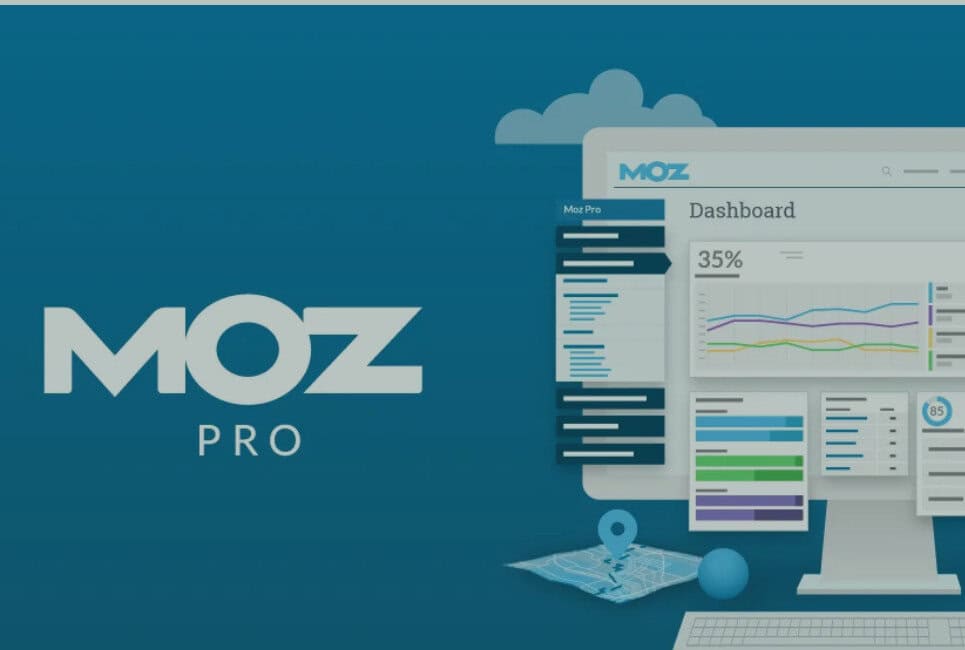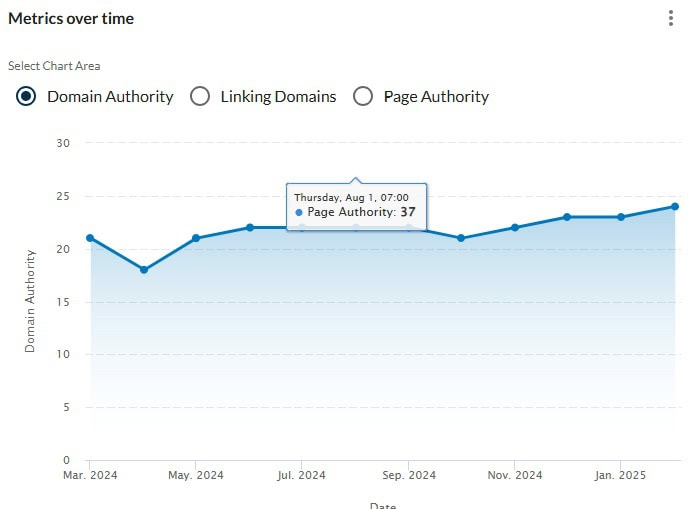Last Updated on May 21, 2025 by Ewen Finser
Moz and SpyFu are two of the most widely-regarded all-in-one SEO platforms around, but you only need one of them to help you manage and grow your organic traffic.
So which one should it be?
I want to help you answer that question once and for all by comparing each tool head-to-head in terms of all the things that really matter:
- Ease of use
- Features and data
- Value for money.
Hopefully by the time you’re done reading, you’ll know everything you need to know to decide whether it’s Moz or SpyFu that’s best for your business.
Moz vs SpyFu – The Main Differences
- SpyFu costs less than Moz, but Moz allows you to generate more domain SEO reports with more keywords per report.
- Moz is better at keyword research, link building, and other aspects of organic search, while SpyFu is best for deep insights into paid search, especially if you want to unearth your competitor’s ad strategy and spending.
- While both are beginner-friendly, Moz is better organized, while SpyFu offers more raw data but can feel cluttered due to its multiple menus and dense interface.
I personally rely more on SEO tools for organic visibility, and this is where Moz shines. It has all of the traffic data, search insights, and rank tracking, available lightning fast. Unlike other suites I've tried, Moz is quick with little lag time.
The Short Answer:
Deciding between Moz and SpyFu comes down to one key factor:
Whether or not you want to track and analyze PPC data alongside organic search metrics.
If you do, SpyFu is the one to go for as it offers a wealth of insights into PPC performance for both your sites and those of your competitors. However, if you’re purely invested in growing your organic search, you’ll find that Moz is faster, less frustrating, and all-round better suited for traditional SEO tasks.
Moz vs. SpyFu – Head-to-Head Comparison
At first glance, Moz and SpyFu seem closely matched.
They both offer essential SEO tracking and research tools for keywords, competitors, and your own domains. They also both do a great job in presenting data that’s really easy to understand, interpret, and turn into actionable decisions.
However, the more you spend time with each tool, the more their differences become glaringly obvious.
Let’s take a look.
1. Ease of Use
Neither SpyFu nor Moz are difficult to use. Each offers intuitive features that present meaningful data in a way that’s clear and immediately makes sense.
However, Moz has a slight edge in the usability department thanks to its navigation and overall performance.
A. Navigation
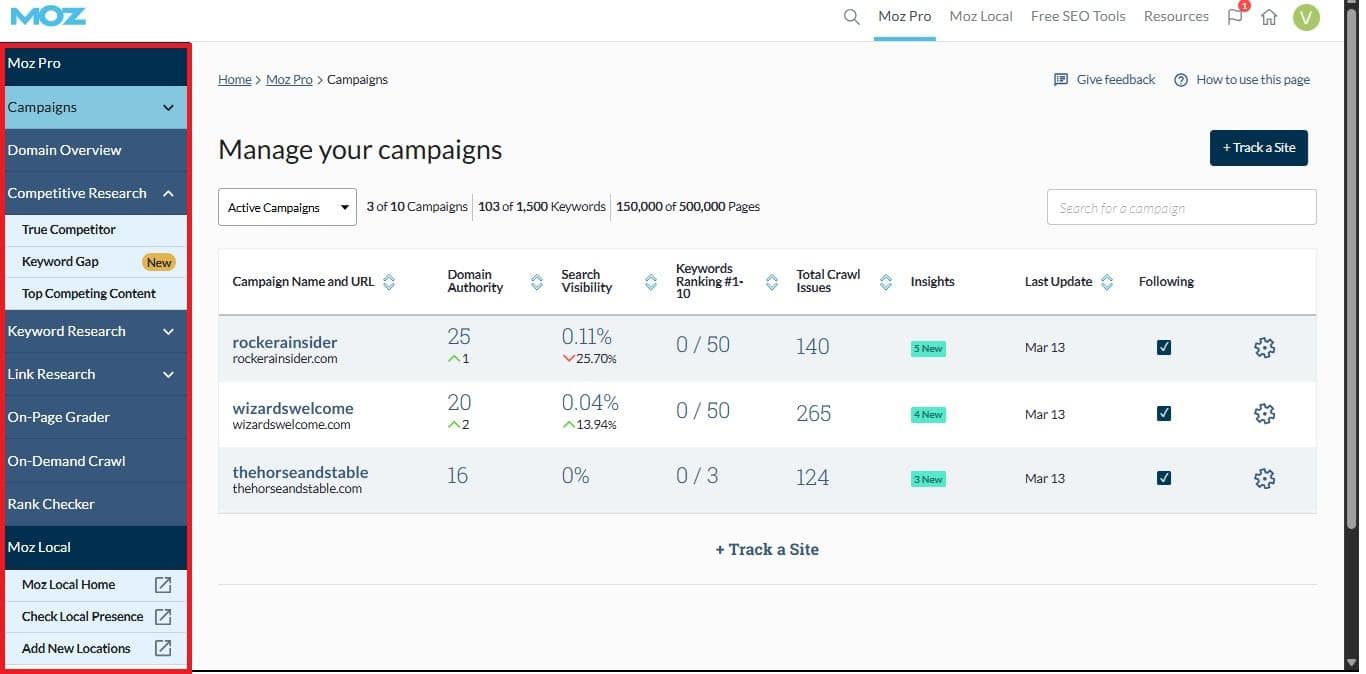
With this platform, all your features are neatly organized into a single menu with logical sub-menus that get you directly to the exact tool you want to use.
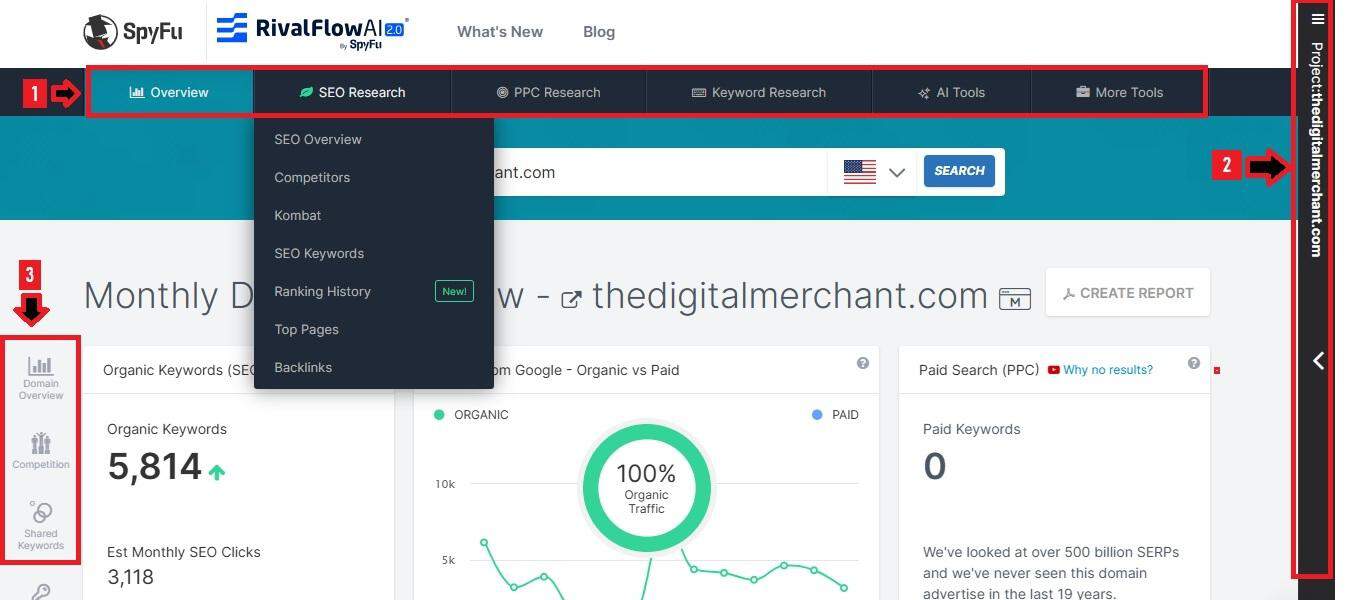
With SpyFu, you have three menus to contend with on any given page.
First, there’s the main features menu which is mostly well-organized. I say ‘mostly’ because there’s a few tools that I feel could be better categorized and I’ll get to those later in this review.
Next, there’s the projects tab that slides open to reveal a different dashboard where you can group all of your data for each researched domain.

The feature itself is great, but having it forever lurking in a collapsed tab at the side of the screen is distracting to say the least.
Finally, there’s a third menu that helps you jump to specific data sets on each page. On the one hand, this is actually a really useful feature from which Moz could definitely benefit.
SEO platforms typically cram lots of different insights into one page, so having a menu lets you quickly get to the exact information you’re looking for.
Since Moz has no such menu, you’re left with no choice but to scroll up and down what can sometimes be some pretty substantial dashboards to find what you need.
So, sure, it’s a win in that regard. On the other hand, however, SpyFu giving you three different places to click and explore feels like overkill. It certainly makes it more cluttered and less intuitive.
B. Performance
I’ve written a lot of these head-to-head software comparisons in my time, and I rarely ever mention performance because normally, even if one platform performs faster than the other, the difference is usually so slight that it barely makes a difference.
When it comes to these two platforms, SpyFu is noticeably (not to mention frustratingly) slower than Moz.
For the sake of fairness, I tested both platforms on the same device and browser with no other tabs or programs open.
With Moz, you can go to any page, type in a keyword or domain, and get almost instantaneous results. With SpyFu, you’re sometimes left staring at a grey circle which spins endlessly around while the insights take their sweet time to load.
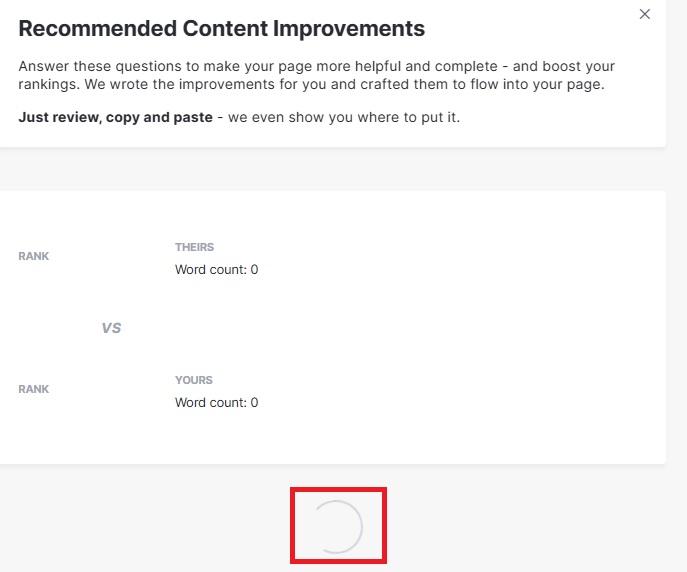
This isn’t true of all features, but certainly enough of them that it leads to an annoying user experience.
2. Key Features
A. Domain Overviews
Both Moz and SpyFu present their domain overview data in clear, simple formats that make it easy to interpret what you’re looking at and make quick decisions.
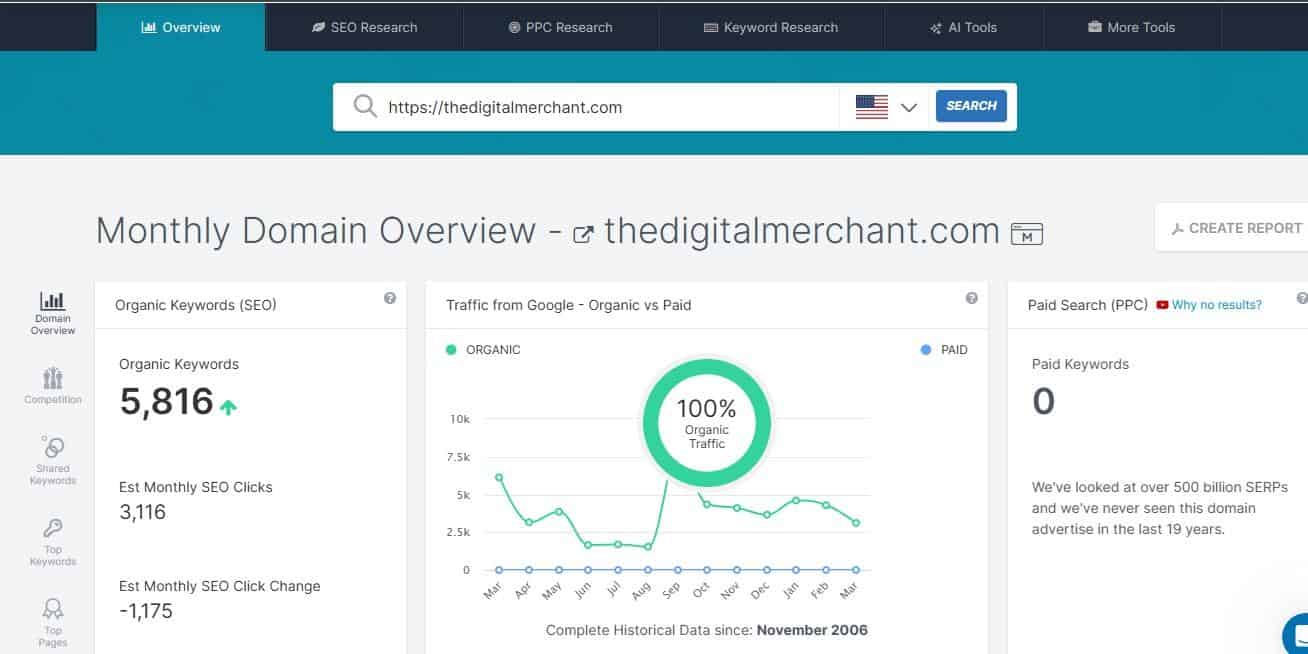
Both cover all the essentials:
- Top ranking keywords
- Top performing pages
- Biggest competitors
- Backlinks
And more.
Each platform lets you jump off from any of the data boxes on its dashboard to discover more data, which is handy for quickly getting into the specific metrics that make the biggest difference to your campaigns.

The main difference between the two is that SpyFu provides actual data (such as search traffic, keywords, and competitors) for both organic and paid search, while Moz focuses purely on organic search and presents its proprietary “Authority” scores upfront.
Neither one is necessarily better than the other. It all depends on your specific needs and circumstances.
For example, if you do want to analyze your paid search alongside organic performance, then SpyFu is the clear winner.
However, if you’re focused purely on organic search, those authority scores can help you quickly benchmark your site’s strength and competitiveness, ultimately guiding your SEO strategy more effectively.
B. Keyword Research
When it comes to organic search, Moz offers a superior keyword research experience to SpyFu.
For one thing, the latter separates its keyword research tools into different sections. If you want a basic list of keywords a domain currently ranks for, then you’ll find that under the SEO research tab.
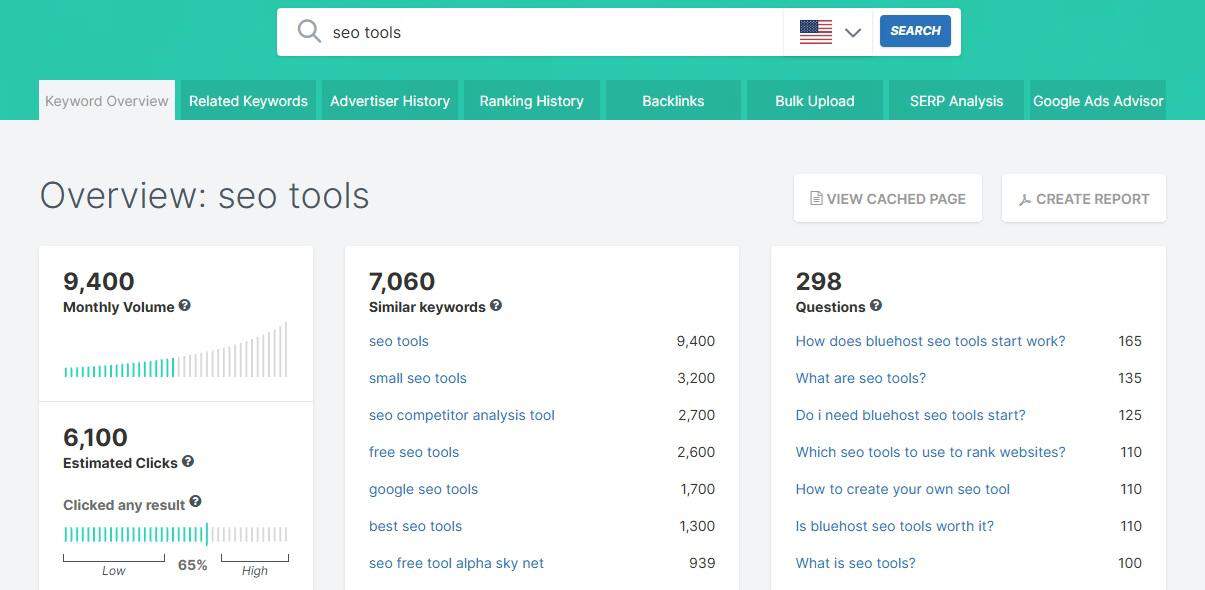
If you want to do traditional keyword research to determine which keywords to target, then SpyFu has a different keyword research section to dive into. While it makes sense to keep the two separate, the fact that they’re not organized in the same category can be a little confusing.
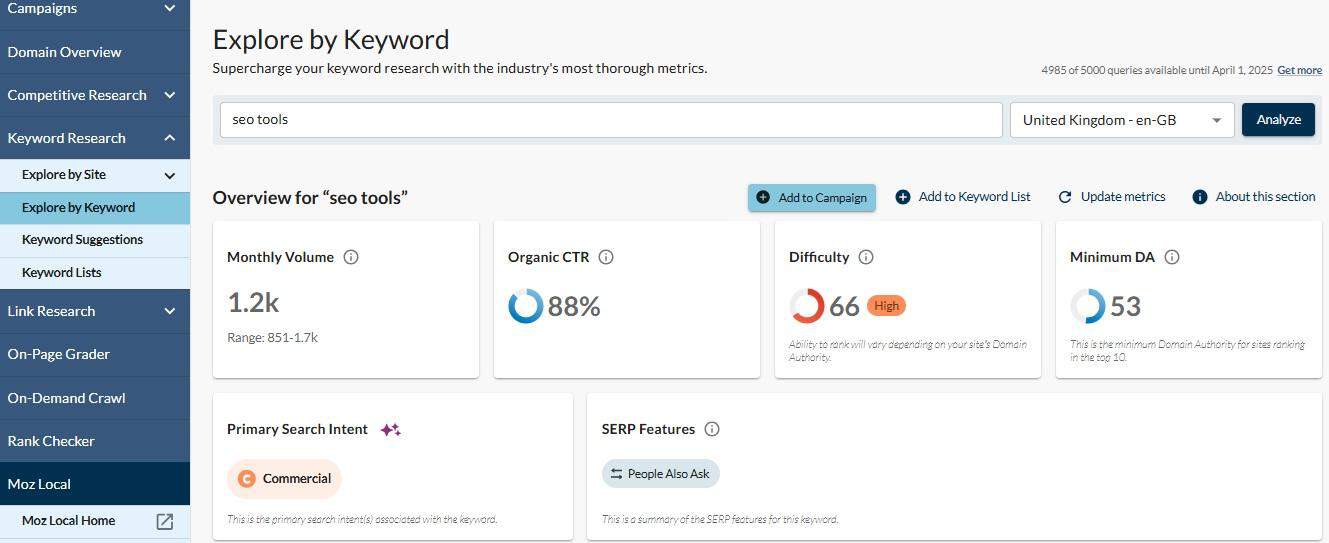
Meanwhile, Moz keeps both its ‘explore by site’ and ‘explore by keyword’ tools in the same ‘Keyword Research’ section, making them easier to find.
What’s more, with Moz, it’s quicker and easier to make informed decisions about keyword targeting.
Both platforms provide a ton of data on things like:
- Related keywords
- Monthly search volume
- Keyword difficulty
- Top-ranking pages for your targeted keyword.
However, Moz focuses on giving you all the essential data right at the very top of the page.
It also tells you the Domain Authority (DA) of pages ranking in the top 10 search results for that keyword. Compare that DA score to your own, combine it with the key metrics above, and you can get a pretty good sense right away of whether that keyword is worth your investment.
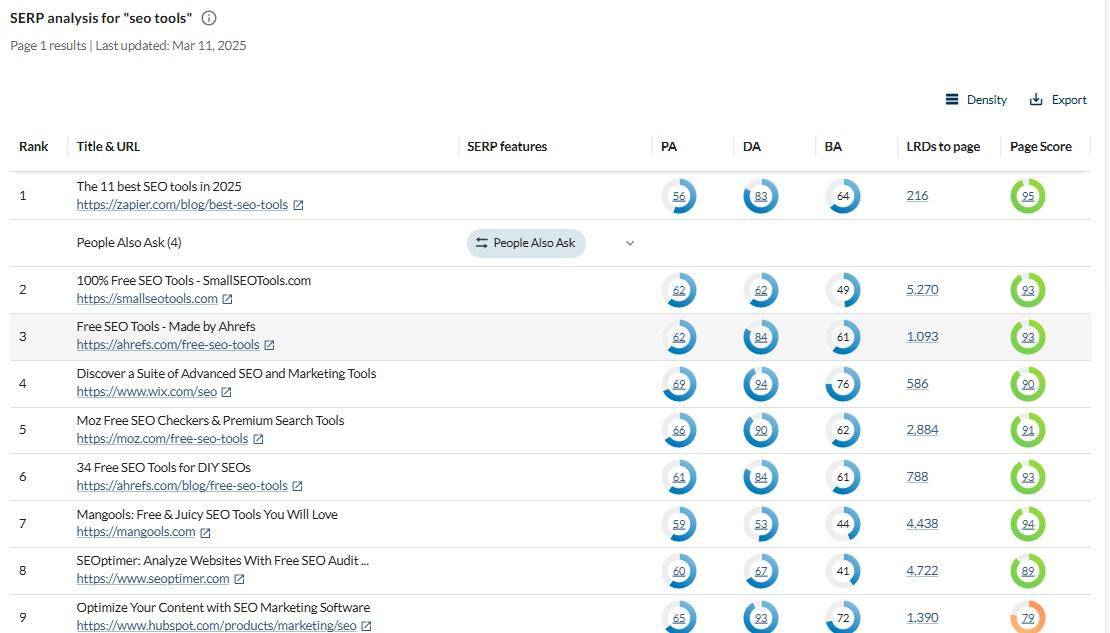
Once you’re done with that, then you can dive into other useful data like related keywords and SERP analysis.
SpyFu tells you the search volume and CTR data right away, but it focuses more on related keywords.
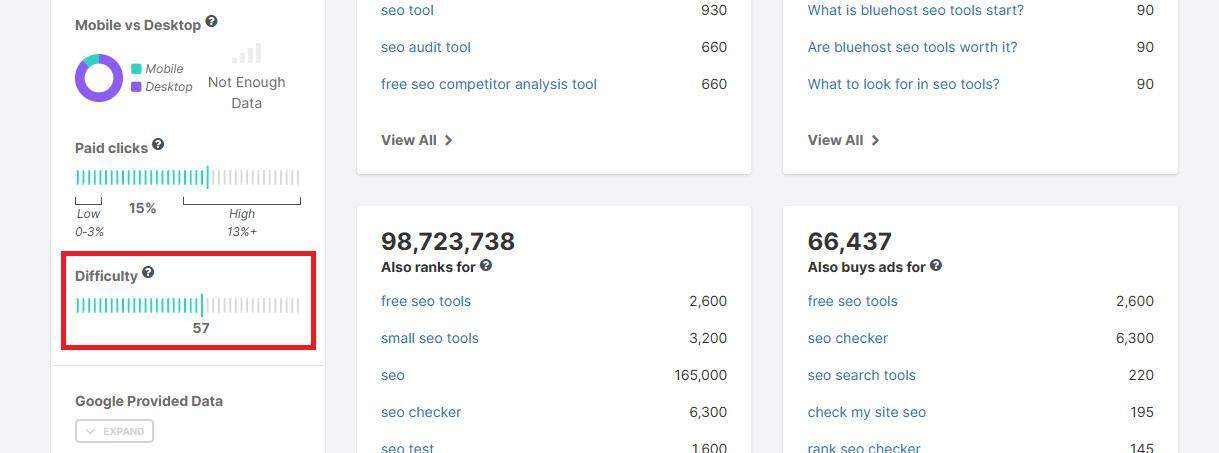
Keyword Difficulty is buried halfway down the page, so it’s harder to find, and I spent an embarrassing amount of time scrolling up and down SpyFu’s page before I realized search intent was completely absent.
Where SpyFu does triumph is its focus on PPC data. So, you get useful data on:
- Cost Per Click
- Monthly cost
- Most successful advertisers and their best ads.
Moz doesn’t provide this PPC data, so, again, which platform you use is likely to come down to whether or not you’re focussing on paid campaigns.
C. Link Building
Moz continues to prove its SEO prowess by offering a far more extensive list of easy-to-use backlink features.

Here, a simple overview of your backlink profile leads to deep insights into your current inbound links, as well as:

The number of discovered and lost linking domains,
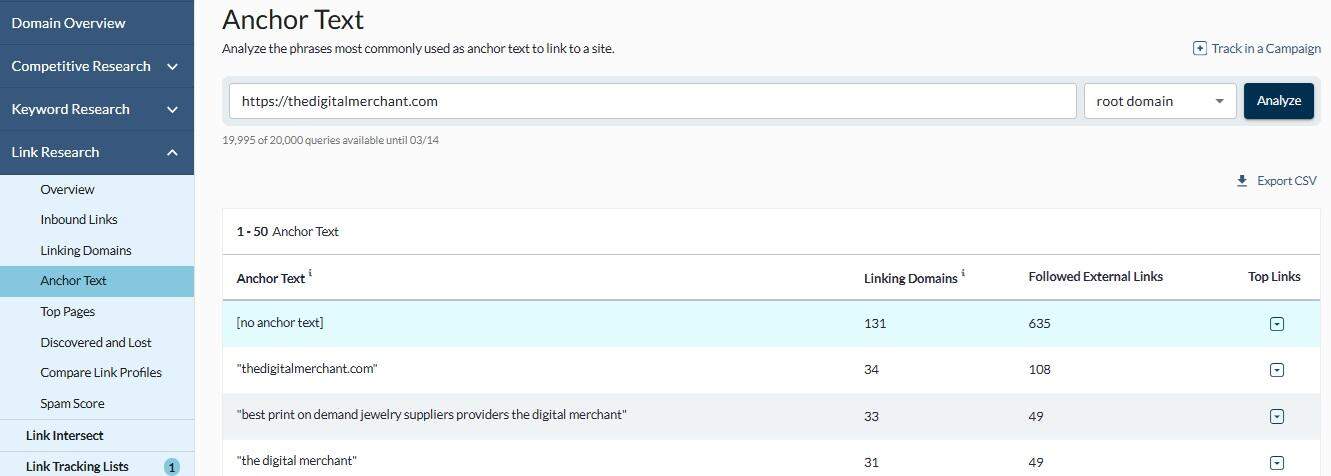
the most common anchor texts used in links to your domain, and other key data.
Meanwhile, SpyFu lets you enter a keyword and then tells you which pages you should reach out to for a backlink targeting that keyword.

That’s it.
Although I appreciate having a whole new set of potential backlinking opportunities, I appreciate the depth of analysis offered by Moz much more as it provides a comprehensive understanding of my backlink profile and long-term link-building strategy.
D. Content Improvement Features
SpyFu offers a tool called RivalFlowAi which is designed to help you figure out why your content isn’t performing as well as other platforms.
There are two problems with this tool:
I. It’s an add-on, and, at a minimum of $79 per month, a pretty expensive one at that.
II. It’s slow as molasses.
Enter a domain name, and it picks out a whole bunch of URLs that it thinks can be improved.
Pick one, wait a while as it suggests a competitor’s content to compare yours to, then wait even longer while it generates some insights.

See this Generating status in the screenshot above?
I was stuck on that for so long that I gave up, went to grab some coffee, came back, and still didn’t have the results I was looking for.
Meanwhile, Moz’s Page Grader tool gave me insights in a matter of seconds.
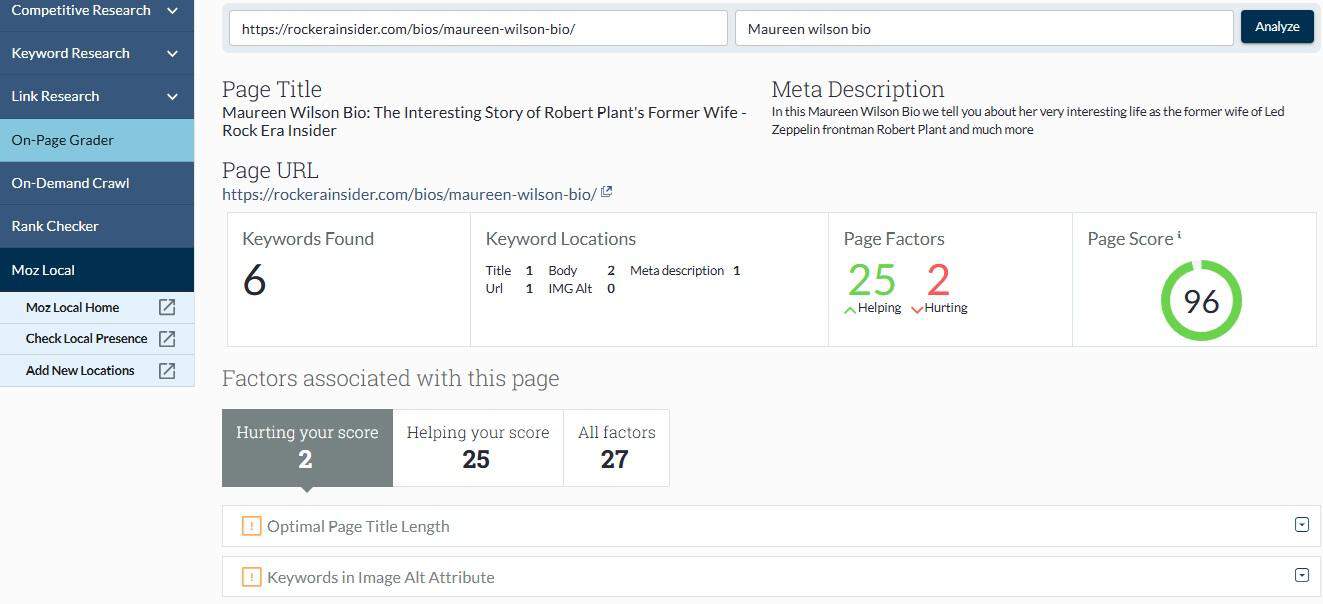
Here, it just takes a few seconds of manual input up front as you have to manually enter a URL and the keyword you’re targeting.
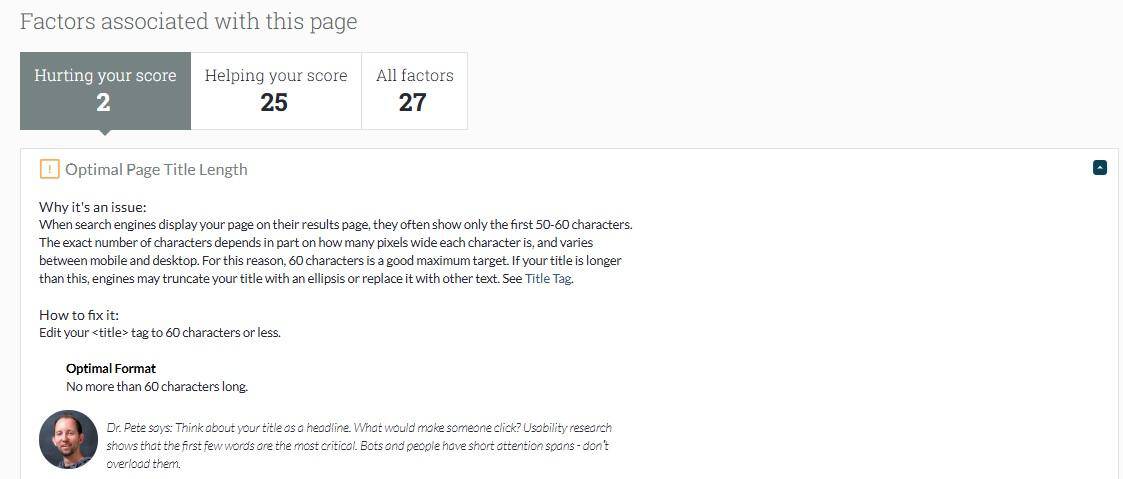
From there, it works almost instantly and provides clear, actionable insights into what’s helping and hurting your pages.
3. Pricing
If your number one priority is simply to spend as little money as possible, SpyFu may appeal more than Moz.
With its entry-level Basic Plan costing $33 per month (billed at $396 per year) compared to Moz’s $39 per month ($470 per year) Starter plan, it’s clearly the least expensive of the two options.
That doesn’t necessarily mean it offers the best value for money. Ultimately, that’s going to be determined by the number of sites you want to track and the size of them.
For example, that $33 per month SpyFu plan limits you to 10 domain overview reports for small sites of up to 1,000 keywords.
Meanwhile, for $6 more, Moz’s $39 per month plan gives you 20 overview reports with up to 5,000 keywords per site, making it a much better option for tracking multiple, larger sites or for those needing more comprehensive keyword data.
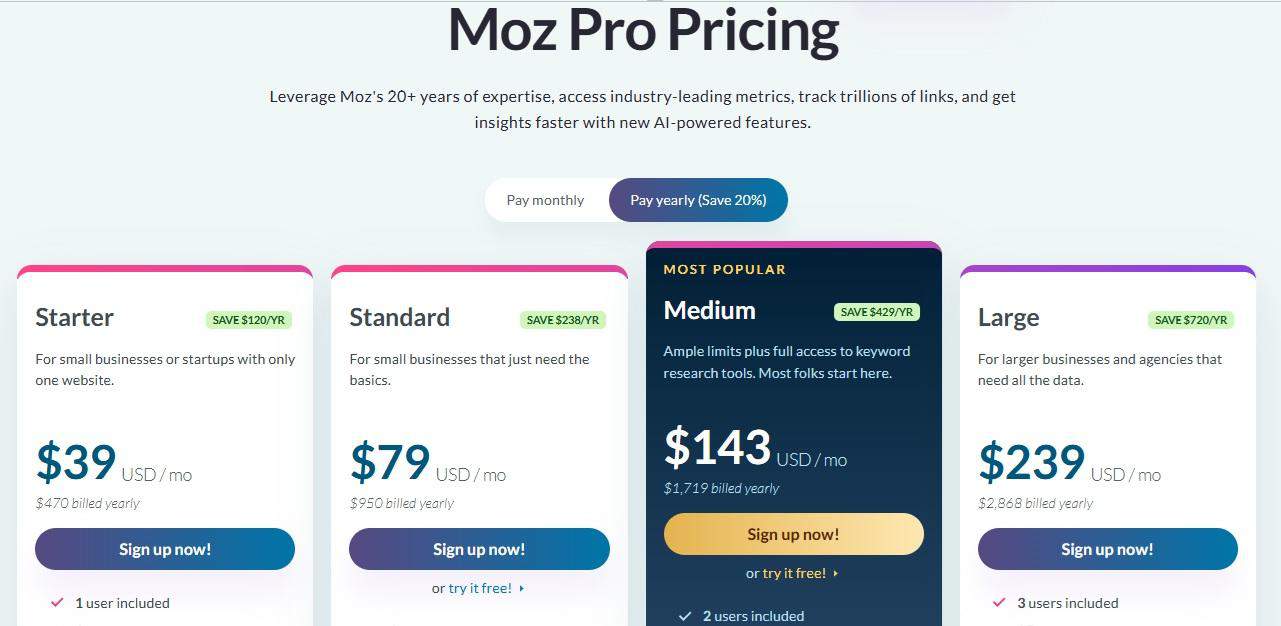
In other words, the best value for your money is going to be determined by evaluating the specifics of each plan and determining which one aligns best with your tracking needs and site size.
I’ve spent a lot of time with both Moz and SpyFu and can confidently conclude that Moz is the better of the two options if you’re purely focused on driving traffic from organic search.
With a wealth of data on paid search campaigns, competitor ad spend, keyword performance, and ad copy analysis, SpyFu is the better choice for tracking paid campaigns alongside your organic efforts.
However, it’s also slower, not as well organized, and favors raw data over actionable insights that allow for quick decision making.
Meanwhile, Moz excels in delivering well-organized, user-friendly tools that focus on providing you with the data and insights you need to make swift, informed decisions for organic SEO success.
I personally rely more on SEO tools for organic visibility, and this is where Moz shines. It has all of the traffic data, search insights, and rank tracking, available lightning fast. Unlike other suites I've tried, Moz is quick with little lag time.
Still keeping your options open? Check out our recent Moz vs. Ahrefs review for another top alternative to these two popular all-in-one SEO tools.

